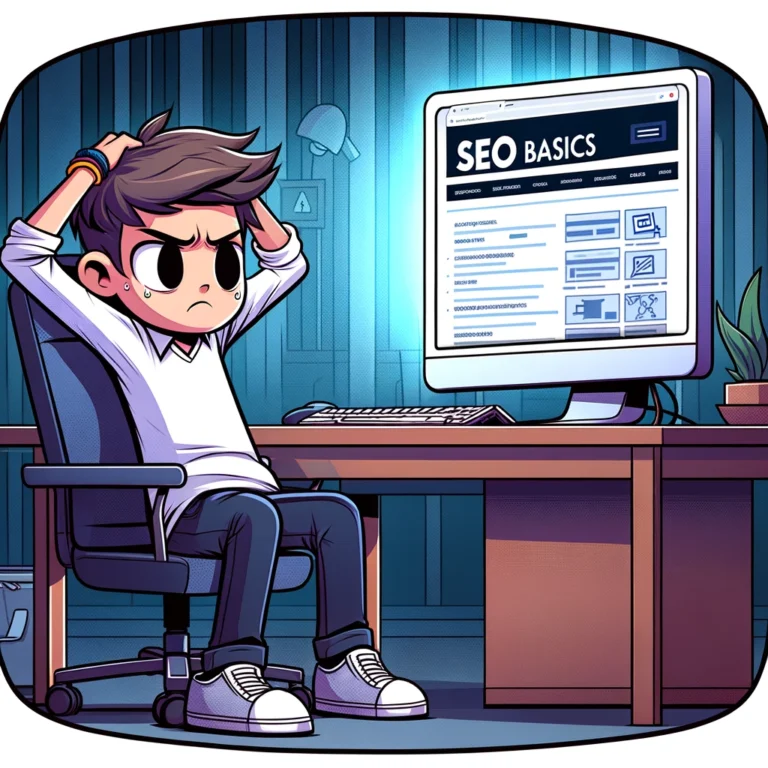In the vast and ever-evolving landscape of digital marketing, Search Engine Optimization (SEO) stands as a critical component for online success. Among various SEO elements, managing duplicate content is paramount for maintaining website health and ensuring visibility in search engine results. This article delves into the concept of duplicate content, its implications for SEO, and practical strategies for mitigation.
What is Duplicate Content?
Duplicate content refers to substantial blocks of content within or across domains that either completely match other content or are appreciably similar. Typically, this is not deceptive in origin. Variations in URL parameters, session IDs, or simply the mobile and desktop versions of a site can inadvertently result in duplicate content issues.
Why is Duplicate Content a Problem for SEO?
- Dilution of Link Equity: Duplicate content can dilute link equity, which is the value passed to a website via links from other websites. When multiple pages have similar content, the external sites linking to your content might spread links across these duplicates. This dispersal can weaken the link equity that might otherwise have been concentrated on a single, authoritative page.
- Wasted Crawl Budget: Search engines allocate a certain budget to crawl each website, known as the crawl budget. If a search engine spends much of this budget crawling multiple pages with duplicated content, it has less capacity to index other unique pages of the website, potentially leaving important content unindexed.
- Poor User Experience: From a user’s perspective, encountering duplicate content across different pages can lead to confusion, making it difficult for them to find the specific information they are searching for. This can degrade the overall user experience and diminish the site’s perceived value.
- Risk of Penalization: While Google states that duplicate content does not lead to manual or algorithmic penalties, it can still impact rankings indirectly. Search engines might struggle to determine which version of the content to include or exclude from their indices.
How to Identify Duplicate Content
Identifying duplicate content is the first step towards resolving it. Tools like Google Search Console, Copyscape, or Screaming Frog SEO Spider can help detect duplicate content issues by analyzing your web pages and identifying duplicates. Regular audits can help keep your content unique and SEO-friendly.
Strategies for Managing Duplicate Content
- Use 301 Redirects: When duplicate content is found, using a 301 redirect to the preferred page can help transfer link equity to the more relevant page. This method is especially useful for permanent content relocation.
- Implement the Canonical Tag: By using the rel=”canonical” link element, webmasters can specify the “canonical” or “preferred” version of a web page as part of their SEO strategy. This helps search engines understand which version of a page to show in search results.
- Improve Internal Linking: Consistent internal linking ensures that search engines understand the relevance and the hierarchy of pages on your website. It can also help prevent the creation of duplicate content.
- Be Consistent with URLs: Session IDs, tracking parameters, and certain URL parameters can create multiple URLs that point to the same content. Where possible, streamline URLs and ensure each functional element of your website has one, definitive URL.
Managing duplicate content is an essential part of SEO that can enhance site visibility and user experience. By identifying and addressing duplicate content proactively, website owners can maintain the integrity of their site and improve their SEO performance. With the right tools and strategies in place, it’s possible to mitigate the risks associated with duplicate content and solidify your website’s standing in search engine results.

Advanced Techniques for Handling Duplicate Content
After laying the groundwork with basic strategies for managing duplicate content, let’s explore some advanced techniques and considerations that can further refine your SEO approach and ensure your content remains unique and impactful.
Leveraging Parameter Handling in Google Search Console
Google Search Console offers tools that allow webmasters to instruct Google on how to treat URL parameters. This can be particularly useful for e-commerce sites where URL parameters are used extensively for tracking and sorting products. By specifying which parameters should be ignored, you can prevent Google from crawling and indexing duplicate content generated by these parameters.
Using the Hreflang Tag for Multilingual Content
For websites that target multiple regions with language variations, the hreflang tag is essential. This tag tells search engines which language you are using on a specific page, so the search engines can serve that result to users searching in that language. Implementing hreflang can help prevent content duplication issues across different language versions of the same content.
Creating More Unique Content
While technical fixes are crucial, the ultimate solution to duplicate content is creating unique content whenever possible. This does not mean just rewriting existing content, but rather offering new insights, comprehensive data, or unique perspectives not found elsewhere. The richer and more engaging your content, the less you’ll have to worry about issues of duplication.
Monitoring Content Syndication
Content syndication is a common strategy to reach a broader audience by allowing other sites to publish your content. While beneficial for visibility, it can lead to duplicate content issues. To mitigate this, ensure that syndicated content links back to the original content on your site using a canonical URL. Also, negotiate with partners to ensure they use a noindex tag to prevent search engines from indexing the syndicated copy.
Developing a Content Consolidation Strategy
Sometimes, particularly in larger websites, you might find multiple articles or pages on the same topic that compete against each other. In such cases, consider consolidating these pages into a single, comprehensive resource that can attract more traffic and backlinks, and reduce internal competition for search rankings.
Frequently Updating Content Audits
SEO isn’t a set-it-and-forget-it activity. Regular audits are crucial for identifying not just duplicate content but also opportunities for optimization across your site. Schedule content audits quarterly or biannually to assess the effectiveness of your duplicate content strategies and to ensure that new content does not inadvertently create duplication.
Conclusion
In the intricate dance of SEO, managing duplicate content effectively is akin to fine-tuning an engine for optimal performance. By applying both basic and advanced strategies, you can ensure that your website’s content is unique, engaging, and tailored to meet the needs of both your audience and search engines. Remember, the goal is not just to avoid penalties but to enhance the overall visibility and authority of your site, making your content a preferred destination for users and search engines alike.
References:
- Google Search Console: https://search.google.com/search-console/about
- Copyscape: http://www.copyscape.com/
- Screaming Frog SEO Spider: https://www.screamingfrog.co.uk/seo-spider/
- Information on Hreflang Tags: https://developers.google.com/search/docs/advanced/crawling/localized-versions
- Content Marketing: https://lseo.com/seo-services/content-marketing/



